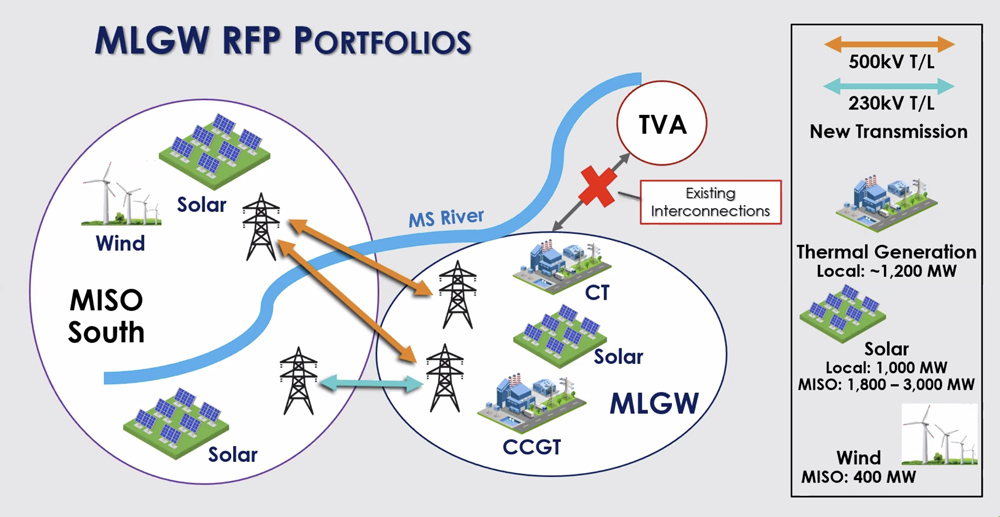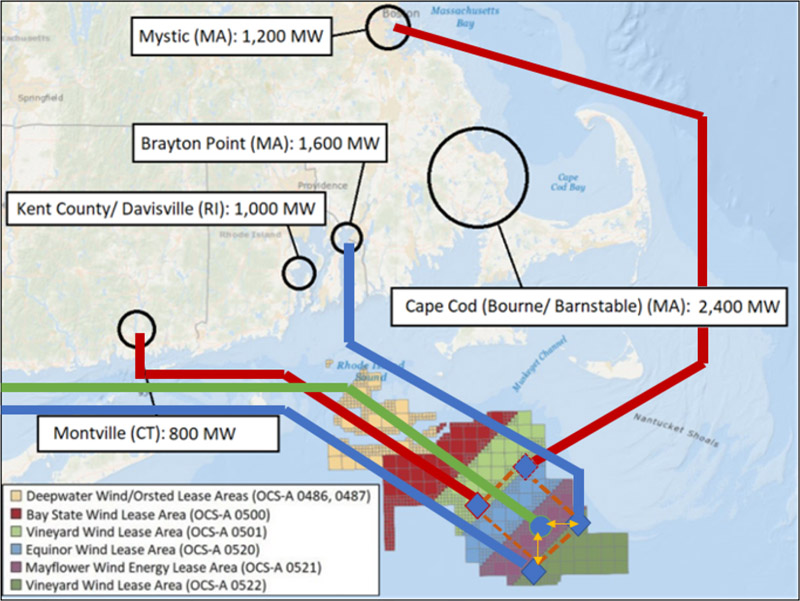FERC issued a pair of orders Wednesday that allow MISO to establish a seasonal capacity auction and availability-based accreditation, but also rejected its request to require a minimum capacity obligation (ER22-495, ER22-496).
The commission said a seasonal auction and an availability-based accreditation will “better align resource adequacy requirements with periods of increased risks on the MISO system.” However, it said the proposed minimum capacity obligation isn’t likely to improve resource adequacy.
MISO in late 2021 sought FERC approval to perform four seasonal capacity auctions with separate reserve margins by the 2023-24 planning year and apply a seasonal accreditation based on a generating unit’s past performance during tight system conditions.
The RTO also filed separately to establish a minimum capacity obligation, where a load-serving entity must demonstrate that it has secured at least 50% of the capacity required to meet its peak load before MISO’s voluntary capacity auctions.
The commission issued the orders just before MISO’s requested Sept. 1 effective date for the new tariff rules. The grid operator has been moving ahead with preparations for the 2023-24 capacity auction while assuming FERC approval.
Most intervening stakeholders reacted negatively to the two filings earlier this year. They said a stricter accreditation based on risky hours that can’t be accurately predicted would result in volatility and unfair penalties for generators. Many also said MISO didn’t explain the reliability problems the minimum capacity obligation was meant to correct. (See MISO’s Seasonal Capacity Proposal Opposed at FERC.)
But FERC said a four-season auction will provide “a more granular assessment of seasonal resource adequacy needs” and ensure that LSEs don’t procure “capacity beyond what is necessary to ensure resource adequacy in a given season.”
“This, combined with MISO’s proposal to accredit resources based on their seasonal performance, will offer further assurance that MISO’s resource adequacy provisions are sufficient to mitigate the system’s resource adequacy risk throughout the planning year,” the commission said.
FERC said the RTO’s plan to use capacity values based on historical performance during high-risk hours “will increase MISO operator confidence that those resources will perform when they are most needed.”
The seasonal accreditation design is rooted in a unit’s prior performance during 65 hours of emergency or other tight seasonal system operating conditions. FERC disagreed with resource owners’ complaints that the new accreditation is overly burdensome or complicated.
The commission also batted back complaints that the accreditation won’t accurately predict availability during system needs. It said although “no capacity accreditation methodology can perfectly predict a resource’s future availability or performance during all intervals,” MISO had made an earnest effort.
But FERC also instructed MISO to complete an informational report that compares the seasonal accreditation results to actual resource availability by the end of the 2025-26 planning year.
The new seasonal design means that MISO’s zones can seasonally clear beyond an annual $257/MW-day cost of new entry (CONE). The current planning resource auction design sets the maximum auction clearing price at CONE, which is calculated by dividing the new generator’s costs over the days in a year. Now, CONE will be divided by the days in a season.
The grid operator has said a seasonal clearing price of up to $1,000/MW-day could be appropriate, though it promised to make sure the sum of four seasonal clearing prices for any zone remains at or below CONE.
Despite member complaints over higher clearing prices, FERC was comfortable with seasonal prices possibly exceeding an annual CONE.
“As MISO explains, such outcomes will incent new entry in the event the MISO system is short capacity,” the commission said.
Clements Objects to Seasonal Design
Commissioner Allison Clements dissented in a 19-page statement, called the seasonal design a flawed and “ambiguous proposal” whose accreditation relies on the “wrong set of hours.” She said crediting resources with up to 12-hour lead times is unwise, given that they “are unlikely to be capable of performing when called upon.”
Clements said it wasn’t clear how MISO or its members would navigate four seasonal auctions held simultaneously in the spring. She said capacity sellers must blindly offer into a season without knowing any results of the other three seasons.
Allowing MISO’s clearing prices to exceed CONE in a season could “provide a loophole for excessive customer costs,” Clements said.
“Today’s decision bakes troubling flaws into MISO’s capacity rules that may jeopardize reliability for years to come. While the majority urges MISO to continue working to improve its capacity rules, it is not clear how some of these improvements could be made within the confines of MISO’s stakeholder process absent Commission action forcing such an outcome,” Clements said.
The commission has no reason to believe that these stakeholder dynamics will change such that MISO will better align capacity payments with system value in the future. Today’s order therefore puts a flawed short-term improvement ahead of long-term results, leaving it to industry to regulate themselves,” she said. “In my view, it would be better for us to insist the job is done right. ‘Measure twice, cut once,’ as the old adage goes.”
FERC Snubs Minimum Capacity Obligation
The commission shared stakeholders’ and the Independent Market Monitor’s mostly dim view of the proposed minimum capacity obligation.
It found MISO’s argument that it needs a minimum obligation to discourage LSEs from relying entirely on the voluntary auction while the RTO navigates a rapidly transforming resource mix “unpersuasive.” The commission said the grid operator had not demonstrated that a minimum capacity obligation “will address or mitigate resource adequacy concerns.”
FERC said it was unconvinced that the obligation will reverse a trend of fading reserve margins because MISO conducts an auction six weeks before its planning year begins. It said the obligation is “highly unlikely to facilitate the construction of new resources ahead of the relevant planning year, as resources, particularly generation resources, take longer to develop than six weeks.” FERC said LSEs will instead likely scramble to procure bilateral contracts from the same resources that would have otherwise offered capacity in the auction.
“…[N]othing inherent in the proposed MCO is likely to support the construction of new capacity in time to meet resource adequacy needs relative to the status quo,” the commission said.
It also said that the RTO didn’t address how the obligation would affect market power by limiting buyers’ ability to purchase capacity in the auction.
“The disciplining effect of the auction, a centralized market where capacity sellers are subject to market power mitigation, on the bilateral capacity market is an important component of both MISO’s resource adequacy construct and the Commission’s approach to market power more broadly,” FERC said.
Commissioner Mark Christie emphasized in a concurring opinion that while FERC rejected the proposed obligation, it didn’t mean MISO couldn’t offer a new minimum capacity obligation in the future.
In another concurrence, Commissioner James Danly said while he agreed with the market power concerns, he would have preferred FERC set the matter to a paper hearing to consider the tariff revisions. He said it appeared MISO has a “desperate need for reform of its capacity construct” combined with a difficult stakeholder process.
“I am concerned by the increasing risk that MISO will be unable to retain sufficient dispatchable generation to ensure reliability and resource adequacy,” Danly said. “With these concerns in mind, I urge my colleagues to consider commission action pursuant to [the Federal Power Act] Section 206.”

